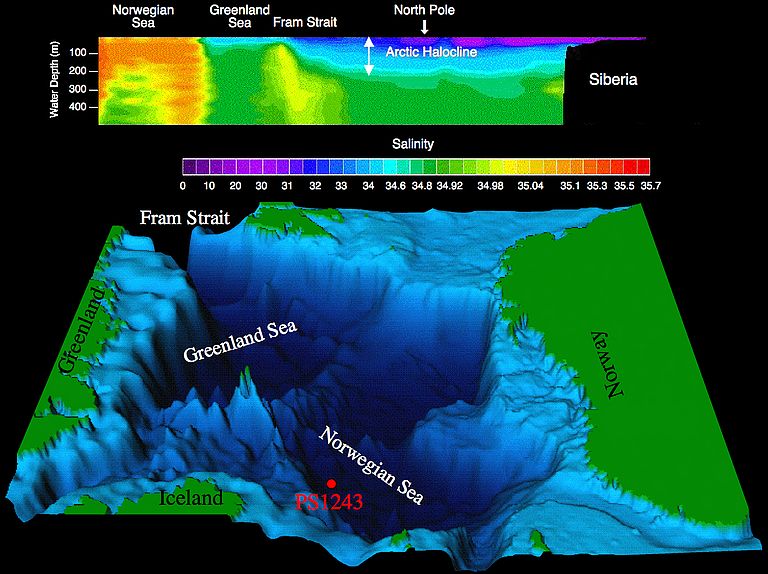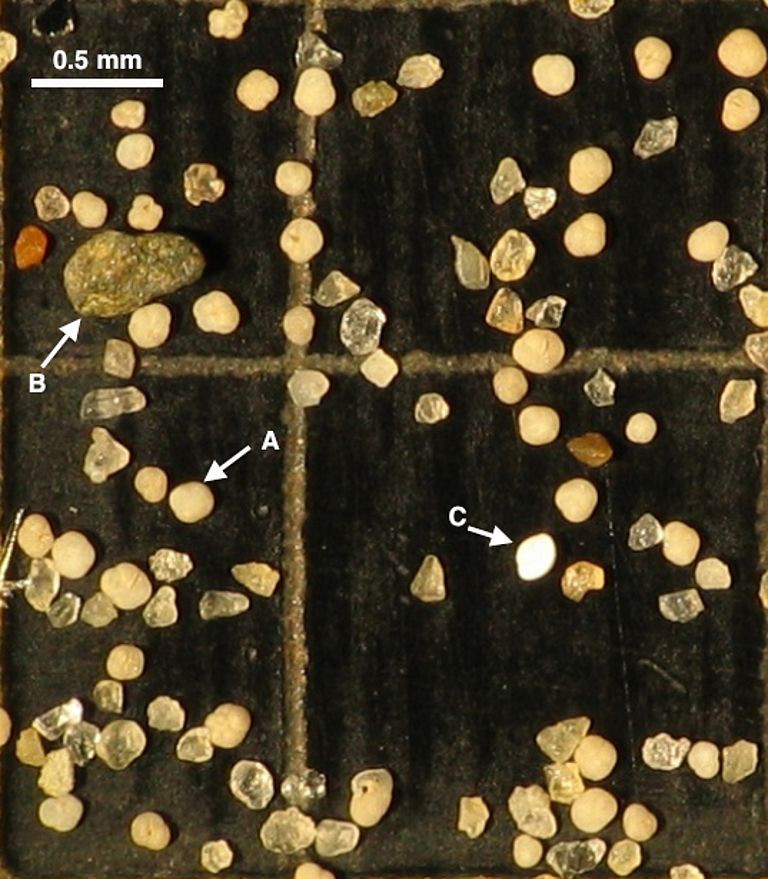Accelerated melting of glacial ice
A warm deep sea caused enhanced ice melting at the end of the last ice age
Increased solar radiation and the subsequent rise of atmospheric temperatures are generally regarded as key drivers for the ending of ice ages. But warmer waters from deeper layers of the oceans are also able to push sea ice melt forward. Together with colleagues from the United Kingdom, the United States, Switzerland and Australia, the marine geologists Dr. David Thornalley, University College London (UCL), and Dr. Henning Bauch, GEOMAR Helmholtz Centre for Ocean Research Kiel and Academy of Sciences, Humanities and Literature in Mainz, demonstrated that water in the deep Arctic Ocean warmed during the peak of the last ice age about 20,000 to 30,000 years ago. The temperature rise affected the North Atlantic during the subsequent melting phase and could have contributed significantly to the vanishing of the ice cover, the researchers explain in the latest issue of the international magazine Science. “The past shows us that changes in ocean circulation can have dramatic consequences for the climate”, Dr. Bauch explains. “Especially in the temperature sensitive Arctic region, such alterations can influence the natural environment system radically.”
For their studies, the geologists isolated so-called foraminifera – single-celled organisms that build their shells mostly of calcium carbonate – from different layers of a sediment core that had been obtained from the bottom of the Norwegian Sea. With the help of radiocarbon dating (14C), they determined the age of the tiny organisms. “We were able to demonstrate that during the last ice age and at the beginning of the global ice melt, the water at a depth of about 3,000 meters in the Norwegian Sea was several thousand years older than layers closer to the surface”, said Dr. Bauch. “We conclude that there was no exchange between the old bottom water and the atmosphere for a long time, and subsequently the deeper water was able to warm up.”
A layer of cold and fresh meltwater at the surface may have prevented the contact like a natural barrier. “This is comparable with the current situation in the Arctic Ocean”, Dr. Bauch states. “However, there are not as many large icebergs, and the fresh water layer is only about 200 meters thick today. During the ice age, we have to assume a thickness of up to 1000 meters.” Because the exchange with the cooler air was interrupted, the water temperatures below the freshwater could rise slowly. Even the evidence of such warming was supplied by the foraminifera: On their shells, special oxygen isotopes, so-called “clumped isotopes”, were detected. “The assumption that the deep water in the Arctic Ocean had warmed during a glacial period had already been suggested in earlier studies. We were now able to substantiate it using other, independent methods”, says Dr. Bauch.
Original publication:
Thornalley, D.J.R., Bauch, H.A., Gebbie, G. Guo, W., Ziegler, M., Bernasconi, S.M., Barker, S., Skinner, L.C., Yu. J. (2015): A warm and poorly ventilated deep Arctic Mediterranean during the last glacial period. Science (online), doi 10.1126/science.aaa9554
Links:
Akademie der Wissenschaften und der Literatur
University College London
Cronin et al. 2012: Deep Arctic Ocean warming during the last glacial cycle
Bauch & Bauch 2001: Last glacial benthic foraminiferal δ18O anomalies in the polar North Atlantic: A modern analogue evaluation
Contact:
Maike Nicolai (GEOMAR, Communication & Media), Tel.: +49 431 600-2807, presse(at)geomar.de




